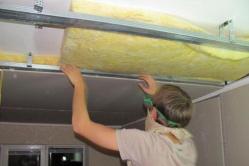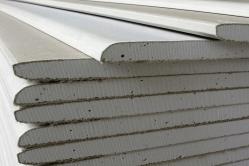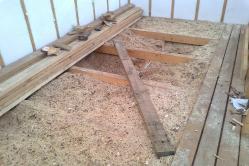Antipyretics for children are prescribed by a pediatrician. But there are emergency situations with fever when the child needs to be given medicine immediately. Then the parents take responsibility and use antipyretic drugs.
What is allowed to be given to infants? How can you lower the temperature in older children? What medications are the safest?
How to insulate a ceiling in a private house
Any owner strives to create a comfortable stay in his home. To do this, it periodically monitors possible heat losses, as a result of which the room temperature may decrease and energy use may increase. Window and door openings are the main conductors of cold air.
As a rule, they are the first to be replaced by home owners with quality products. Many rushed to insulate the walls and foundation. But for some reason people don’t always remember about the ceiling. And in vain! According to the laws of physics, heat loss due to poor quality ceilings can be over 20 percent. The barrier created at the top will prevent heat from escaping, and heating devices will not have to heat the environment.
Methods for insulating the ceiling in a private house include both interior work and in the attic. These works to strengthen the energy protection of the house are equivalent, so each owner can choose a convenient option for themselves.
- The difference between the methods lies in the installation technology and materials used:
- Insulation of the ceiling from the inside is accompanied by subsequent finishing of the surface with plasterboard or other suspended structures. It should be noted that the height of the room after installation will decrease from 10 to 25 cm. The material used must have vapor-permeable properties. These can be: mineral or basalt wool, penofol.
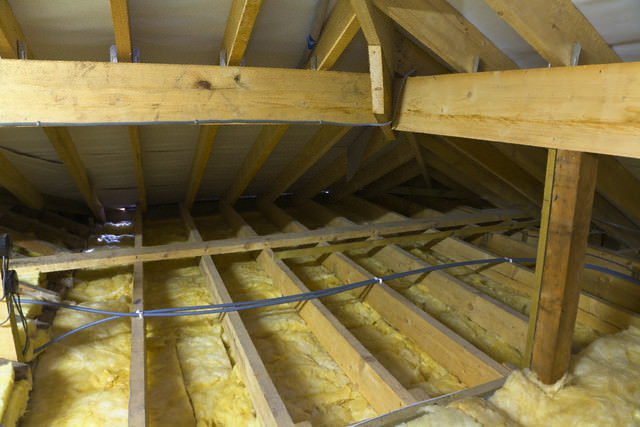
External ceiling insulation is performed in the attic. A more economical and profitable option, since it does not require further finishing work if the use of the room as an attic is not envisaged. It is recommended to use a vapor-tight material to prevent moisture from entering the ceiling. The most commonly used are: polystyrene foam, penoizol, mineral wool, expanded clay.
The modern construction market offers a huge amount of materials for ceiling insulation. Even expanded clay, sawdust, hay, clay and slag are used, which have a number of significant disadvantages among their advantages. The choice must meet the technology requirements.
Basic requirements that insulation must meet:
- do not release toxic substances;
- be resistant to moisture;
- have a low degree of flammability.
Popular materials for energy saving work at home
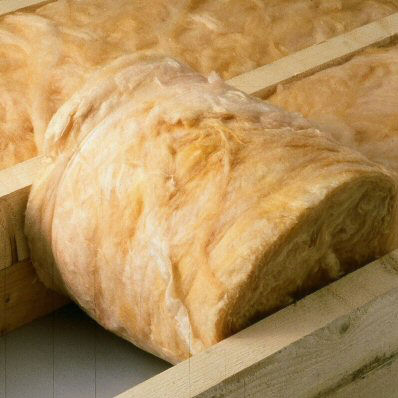
Mineral wool in the form of sheets or rolls is widely used in construction work. The characteristics of the insulation meet the technical requirements of thermal insulation. Use in residential premises is dictated by the absence of toxic substances in the composition and excellent thermal insulation properties. Mineral wool has components of limestone, basalt, diabase and dolomite.
Rocks endow the material with valuable qualities:
- low degree of thermal conductivity;
- resistance to temperature changes;
- lack of flammability;
- environmental characteristics.
Still, the material has disadvantages:
- ability to absorb moisture;
- When installing, be sure to use a waterproofing film;
- additionally treat the joint seams with polyurethane foam for better sealing;
- to attach the insulation, a lathing is made of wooden beams or profiles;
- relatively short service life (10-15 years).
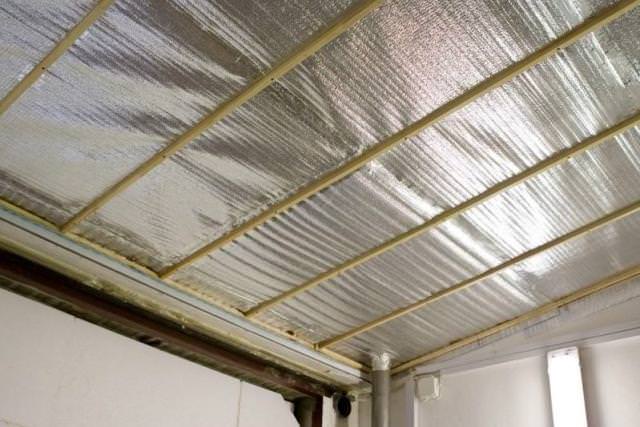
Penofol consists of layers of foamed polyethylene and aluminum foil. Combines the properties of several insulating materials with a fairly wide range of applications. It represents the basis for innovative finishing of balconies and loggias.
It has low thermal conductivity, which will save energy resources. Protective qualities will prevent the penetration of cold air, draft and radon into the room. In summer, penofol will help keep the house cool and create a comfortable microclimate.
The light weight of the material makes installation convenient, and the structure of the structure does not become heavier. To work with penofol, you will need a minimum amount of available tools: a construction knife, tape and liquid nails.
Along with the advantages, there are also disadvantages:
- a flexible surface involves finishing the ceiling with a suspended structure with a frame;
- It is problematic to attach the material to some surfaces;
- To increase thermal protection, it is recommended to use mineral wool.
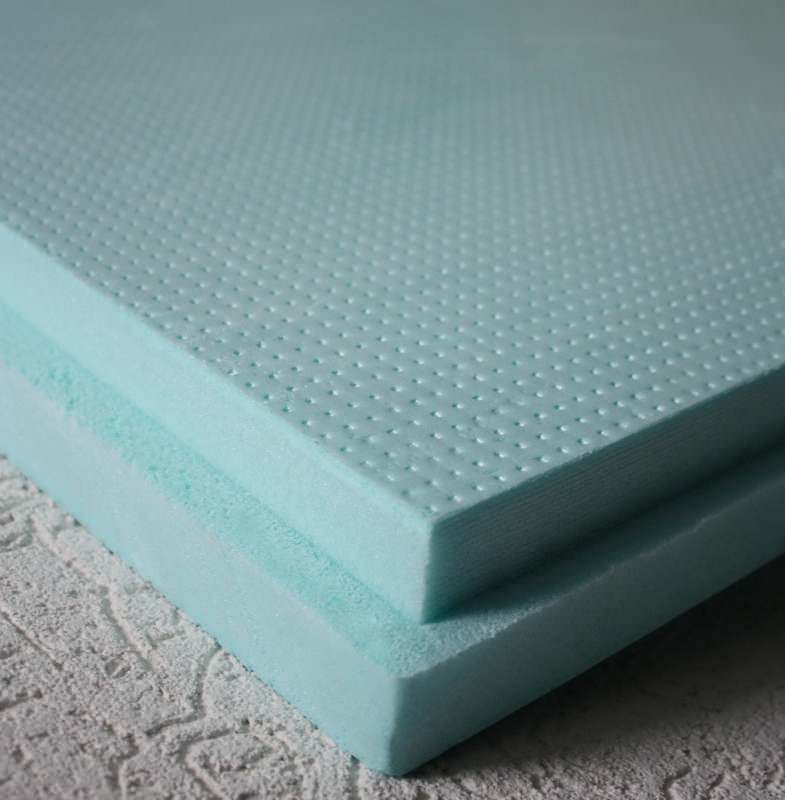
Expanded polystyrene is better known to many as polystyrene foam. The material, easy to use, creates strong heat protection in the room without harming the health of household members. When installed correctly, it fully justifies the cost and retains its quality for a long time.
The advantages are:
- moisture resistance;
- good thermal conductivity;
- light weight, eliminating structural reinforcement;
- easy installation.
Disadvantages include:
- easy flammability;
- instability to ultraviolet rays and solvents;
- low resistance to mechanical damage.
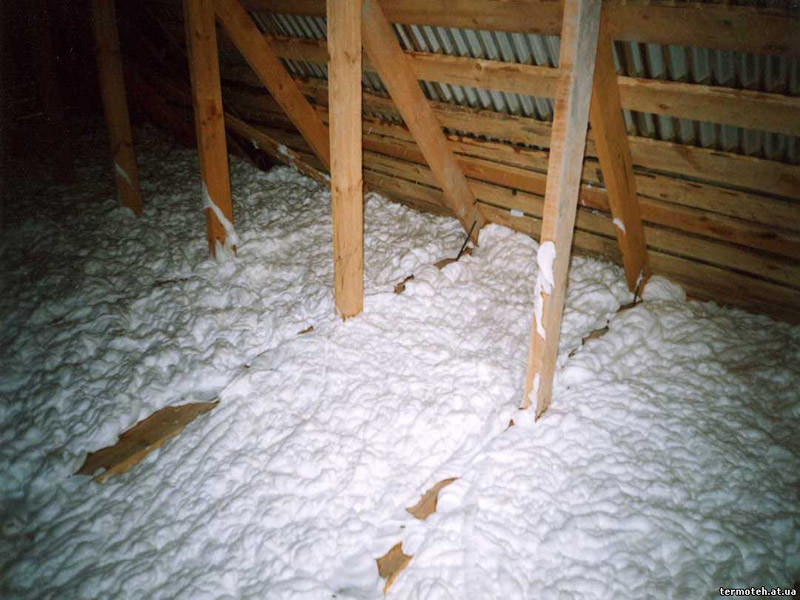
Penoizol is a liquid foam plastic. To insulate the ceiling from the outside, it is necessary to use special equipment to apply a binder to the surface.
Advantages of the material:
- affordable price;
- thermal insulation qualities;
- flammability resistance;
- Easily fills hard-to-reach places;
- safe operation.
Flaws:
- the lack of special equipment precludes independent installation;
- weak resistance to mechanical stress;
- the first 2-3 weeks after installation, a small amount of toxic substance evaporates;
- ability to absorb moisture.
Do-it-yourself insulation
If you adhere to the technological process and make the right choice of material, you can easily perform the installation yourself.
Insulation of the ceiling indoors using mineral wool
To complete the work you will need the following materials:
- mineral wool;
- metal profiles or wooden blocks 150x30 mm;
- hardware;
- vapor barrier film;
- staples;
- polyurethane foam;
- dowels with a wide head;
- drywall.
Set of tools:
- perforator;
- roulette;
- hammer;
- screwdriver;
- scissors;
- construction knife.
Installation stages
- On the ceiling, make a sheathing of wooden blocks or a metal profile in increments of 50 cm.
- Cut the insulation to the size of the sheathing cells with an increase of 2 cm on the sides.
- Place mineral wool in cells without compacting it.
- Treat the insulation joints with polyurethane foam for sealing. The foam will also serve as resistance to shrinkage of the insulation.
- Cover the surface with a vapor barrier film. The joints of the material should overlap by 10 cm. Using staples, secure the film to the sheathing.
- Finish the ceiling using plasterboard sheets.
Insulating the ceiling in the attic using polystyrene foam
Materials required for installation:
- foam sheets 40 mm thick;
- polyurethane foam;
- OSB sheets 15-18 mm;
- hardware.
Tools:
- drill;
- hacksaw;
- hammer;
- bench knife;
- screwdriver
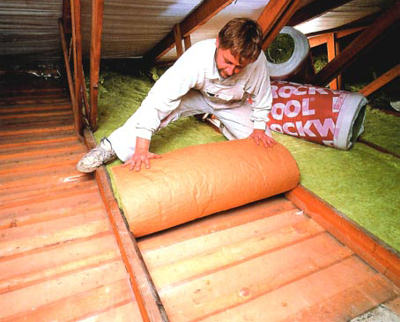
Installation stages
- Clear the attic floor of debris. If there are damaged areas or holes, seal them with cement or gypsum mixture.
- Place the foam on the surface, butting it tightly together.
- Treat the connecting seams with polyurethane foam.
- Cover the top with OSB sheets (15-18 mm) or boards.
If you plan to use the attic space as an attic, the insulated surface must be filled with a cement screed, at least 5 cm thick. The use of reinforcing mesh is mandatory.
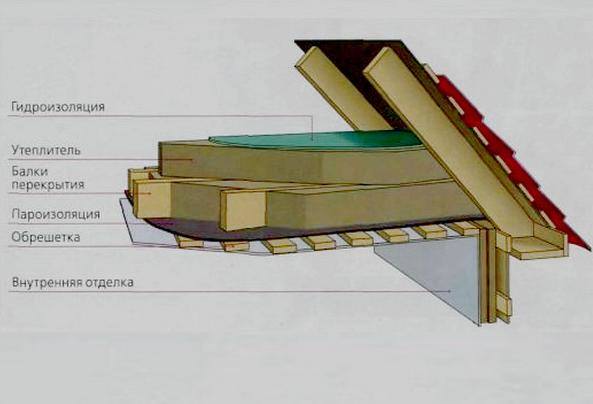
Advice from professionals
- Insulation in the attic using polystyrene foam sheets must be supplemented with finishing in the form of screed or wooden boards. Unprotected foam is susceptible to mechanical damage, which will affect its functionality.
- Thermal insulation from the outside is easier and more economical.
- Mineral wool must not be compressed. By losing its structure, it loses its valuable properties.
- Built-in lamps in an insulated ceiling should be mounted with a barrier from the material using plasterboard inserts at a distance of 2-3 cm.
- To increase thermal protection, you can lay the attic in a comprehensive manner: polystyrene foam and mineral wool. The insulation layers should resemble brickwork.
- For vapor barrier, use marked film. The use of ordinary polyethylene is not allowed.
- When using penofol for insulation in the attic, install with the foil facing down.

